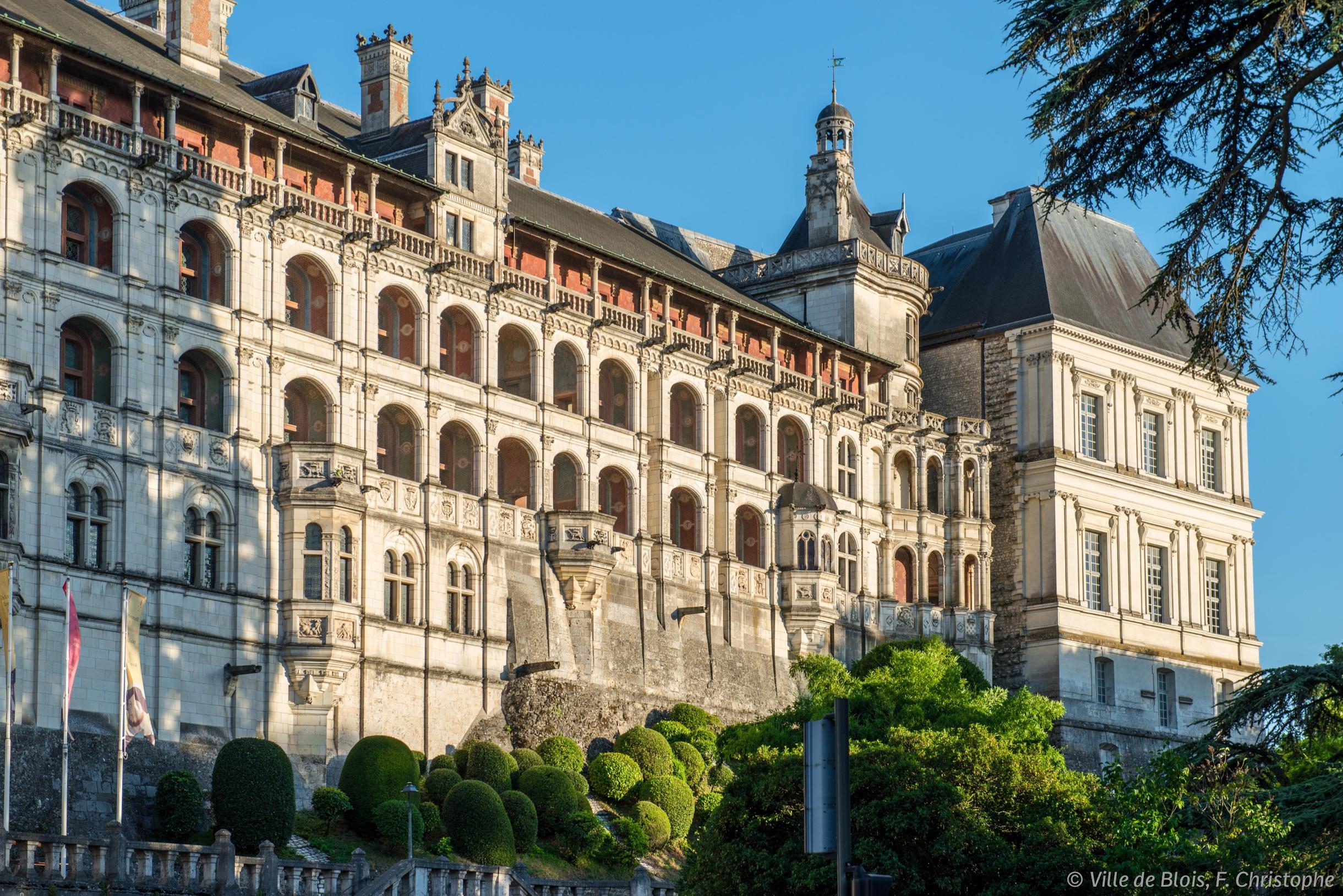Cultural heritage sites in Blois
Saint-Louis cathedral (from the 10th to the 17th century)
Saint-Louis cathedral is one of the most ancient parish churches in Blois. It has been successively known as Saint-Pierre, Saint-Solenne (late 10th century), and finally Sain-Louis (at the tail end of the 17th century); its present-day configuration dates back to that epoch. Since 2000, it has featured remarkable contemporary stained glass windows conceived by Jan Dibbets and, following a public commission, manufactured by a master glassmaker from Chartres. It also contains a “Clicquot 1703” grand organ, offered the year after by Louis XIV.
Saint-Nicolas church (12th and 13th centuries)
Formerly the Saint-Laumer abbatial church, it is the end result of two building campaigns, which took place during a pivotal period in the history of architecture, between the apogees of Roman and Gothic art.
Royal château (from the 13th to the 17th century)
A not-to-be-missed Loire valley site, the royal château of Blois is a historic monument offering a fascinating panorama of the architecture and history of France. Further information on the Château royal (in French or English)
Bishopric gardens (17th century)
The establishment in 1697 of the diocese of Blois led to the construction of a splendid classical episcopal palace, presently the Blois town hall, environed by spacious gardens overlooking the Loire. The area was known for its indoor “jeu de paume” courts; a precursor of lawn tennis, the game was in vogue when the royal court found itself in Blois. The bishopric gardens were redeveloped in 1991 and now include a garden of the senses and an aromatic garden; chestnut trees returned in 2009.
Offering a standout panorama on landscapes typical of the Loire valley, the gardens are popular during lunch breaks and amongst children who come to frolic in the play areas. Located on the lower terrace, the rose garden is open to the public during the summer season. Also known as the “medicinal plant” garden, the garden of the five senses is located in a park to the rear of the town hall. Initially conceived by a middle school class, it associates plants and different installations stimulating the sensorial faculties of the general public. Last but not least, during the summer season a gazebo proposes snacks and refreshments.
The bishopric gardens are open from 8 A.M. until nightfall. They are in close proximity to Saint Louis cathedral, another major touristic attraction in Blois.
Saint-Vincent-of-Paul church (17th century)
Located opposite the royal château and in front of Augustin Thierry square, Saint-Vincent-de-Paul church was under construction from 1626 to 1677. Originally directed by Jesuits, during the French Revolution it became a temple of liberty; in 1826, it was converted into a parish church.
The one-time Poulain chocolate factory
After having launched his initial, small-scale chocolate ship on rue Porte Chartraine in 1847, 25 years later Auguste Poulain opened his first factory on the la Villette site, which is now known as rue de la Chocolaterie. The main building, in the center of the compound, was the “château Villette”. In 1997 the premises were registered on the official list of historic monuments.
Since Poulain’s heyday, the site has been comprehensively redeveloped and presently serves as office space for higher education.
The Trinity basilica (20th century)
Bearing rare testimony to the religious architecture of the 1930s, the Trinity basilica is distinguished by a rich decorative style typifying creative renewal during the inter-war period.
Not to forget…
Museum of religious art
The diocesan museum is home to a wide variety of collections: statues (stone and wood, from the 15th to the 19th century), a substantial collection of liturgical metalwork, including a Vendôme ciborium (16th century, silver), reliquary sets, quilling (18th century, rare paper filigree), and a remarkable series of paraments originating in the Blois convent (chasubles and a gold-embroidered antependium dating back to 1660).
The museum conserves not only objects of evident artistic interest, but also a number of articles with no commercial value that recall popular piety over time. The library conserves incunabula, illuminated manuscripts (15th century) and, for instance, a 16th-century work of which the binding is engraved with the Medici coat arms.
Town Hall entrance
Formerly a classical episcopal palace, each month the Blois Hôtel de Ville plays host to works of art in an original, exceptional setting. Consult the outings agenda for information (in French only) on the current exhibition.










